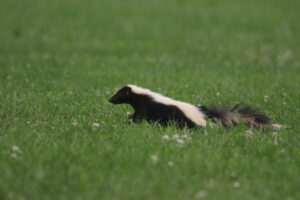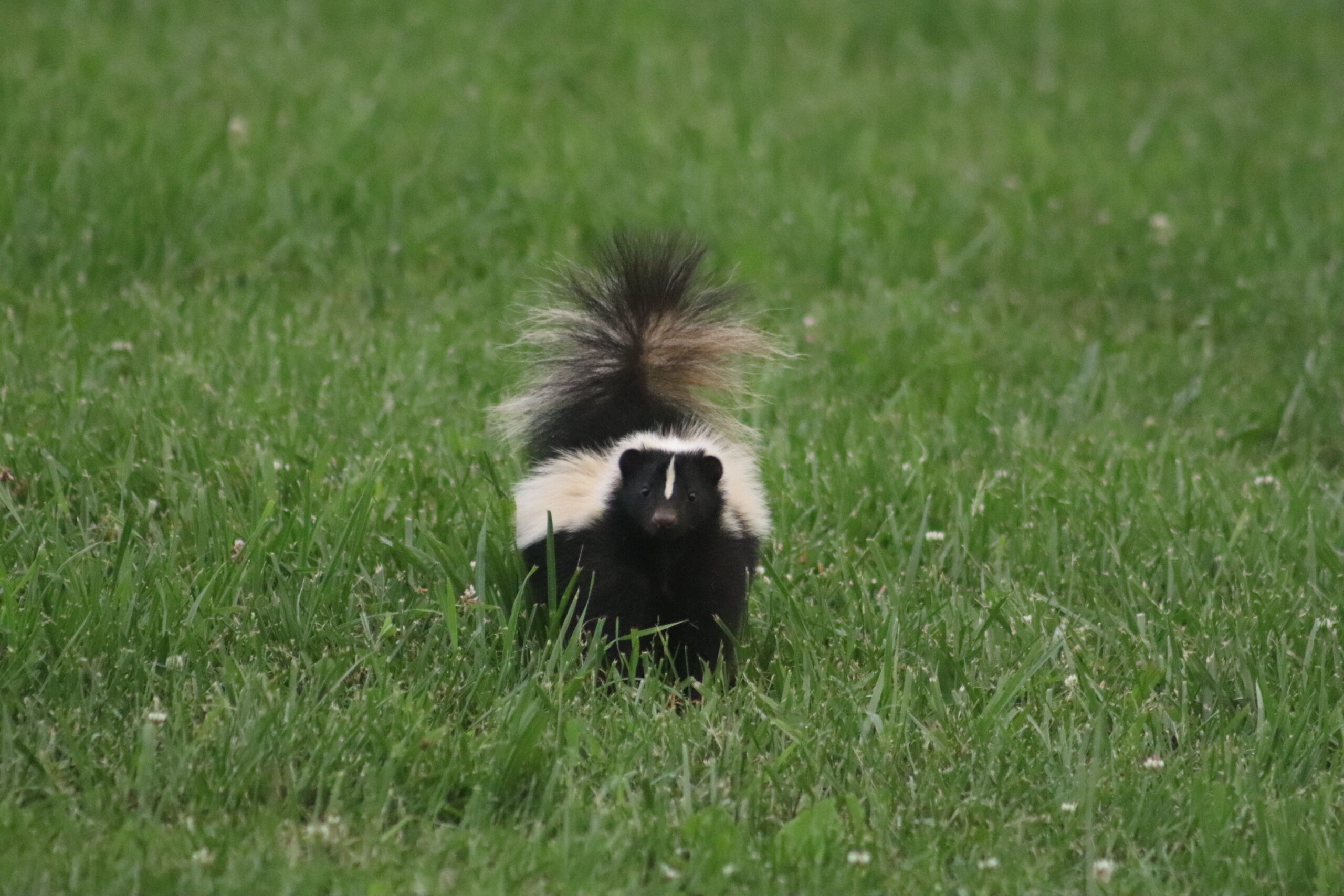by Jacob Crider
If you happen to take a walk at Creasey Mahan early in the morning or later on during dusk, you may come across some of the forests’ secretive and shy mammals like the Eastern Striped Skunk (Mephitis mephitis). While skunks are primarily observed to be nocturnal, they are also on the move during dimly lit hours, which gives us the best chance of seeing these amazing creatures. Animals that become active during dim hours of dawn and dusk are called crepuscular, and many mammals exhibit this behavior to avoid unwanted attention from humans and diurnal predators that are active during the daytime.
Despite being so timid, skunks are famously known for their ability to spray a foul-smelling musk long distances for self-defense and warding off predators. Striped Skunks are member of the Mustelid family, which includes other mammals native to Kentucky such as otters, weasels, and minks. Skunks are the only mustelid that can project their musk, and they can spray it over 15 feet! Few animals prey on skunks, only Great Horned Owls, Bobcats, Coyotes, and other large birds of prey are powerful enough to consider pursuing the pungent defender.

During Summer and Fall, Skunks will eat many insects, small mammals, and fruits that are in season like black cherries, corn, and persimmon. While out and about during the warm mornings of September, they are beginning their preparations for winter. During the colder months, skunks are burrowers, and seek refuge in rocky areas, log jams, and underground burrows. While able to dig their own burrows, they may also use groundhog burrows. Their fur is soft, thick, insulated, and protective, allowing them to be active during early spring months when they are breeding. Skunk babies are usually born in late April until early summer, and their success depends on how the parents hold out over winter.
Mammals like Skunks can be so interesting and charismatic to come across, especially in a world where it is easy to overlook them. This curious skunk was seen at Dusk over the summer in the recreation fields along the edge of the forest, but we see Skunks all throughout the preserve.
The Eastern Striped Skunk’s scientific name (Mephitis mephitis) is known as a tautonym, meaning the scientific species name possessing the same name for the genus and species.


